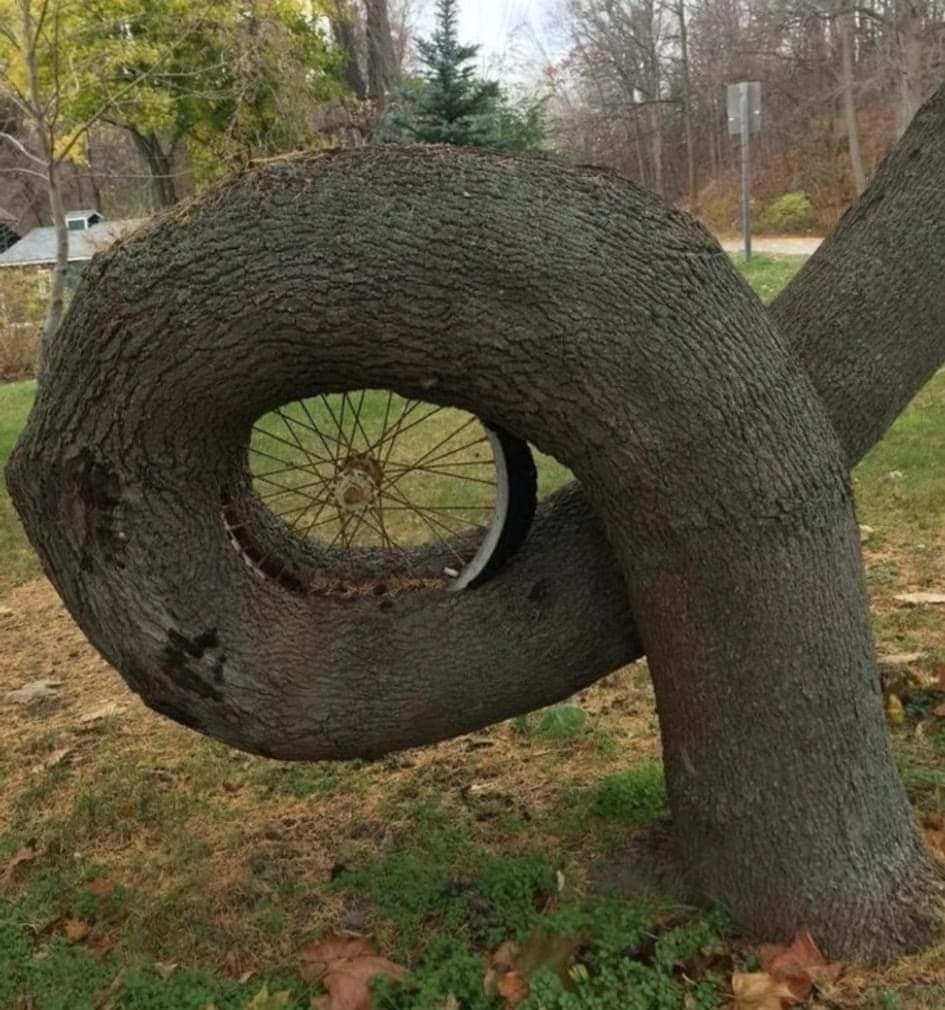
… it’s now a permanent part of this tree!
Lookin Good Tree Trimming and Removal
Kenner, Metairie, Jefferson Parish, River Ridge, St. Charles Parish, Harahan, St. Rose and New Orleans, Louisiana tree removal, stump removal, and tree trimming services. We service residential, commercial, and business-to-business customers.

… it’s now a permanent part of this tree!
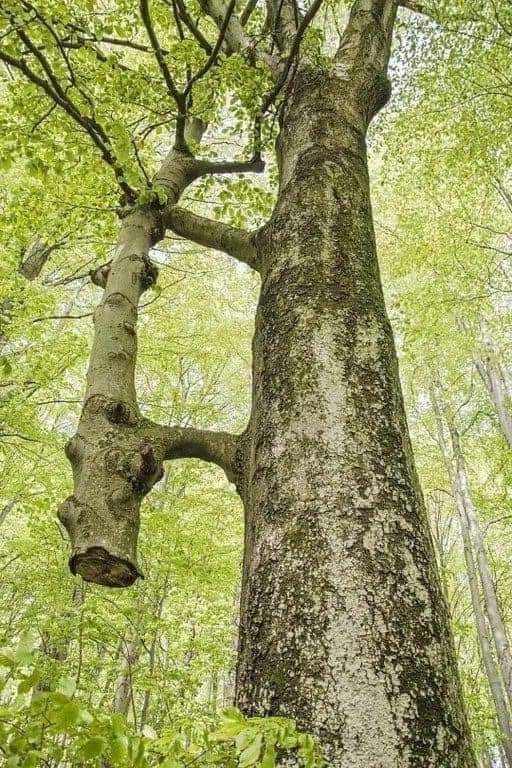
‘The thinner tree was cut years ago and the big one has been holding and feeding it since then. They “wake up” together in the spring and “go to sleep” together in the autumn’
Inosculation is a natural phenomenon in which parts of two different trees, commonly but not exclusively the same species, grow together, self grafting and sharing nutrients
The term emanates from latin- ōsculārī, to kiss
📸 Rebecca Herbert – Environmental Journalist, Tired Earth
Below is a very helpful article from the Louisiana Arborist Association:
DEATH COMES GRADUALLY TO TREES
When trees die, people assume that it is because of current environmental stresses.
Research suggests that trees often die as a result of stresses that occurred years, sometimes decades, before tree death.
Trees typically continued growing for up to 20 years after they were injured by some stress, but the growth rate during those years was substantially lower than before the stress occurred.
DROUGHT SYMPTOMS
Loss of rigidity in needles and leaves
Drooping, wilting, yellowing of foliage
Premature leaf or needle drop
Excessive squirrel damage (especially on oaks)
Bark cracks
Twig and branch dieback
Leaf margin scorch and interveinal necrosis on deciduous trees
Browning of needle tips on evergreens
General canopy thinning
Poor growth and stunting
In extreme cases – DEATH
WHAT HAPPENS IN A DROUGHT?
A water deficit develops in the tree.
Non-woody feeder roots and root hairs are particularly sensitive to drying and are affected first.
They shrivel and become non-functional. They lose the ability to absorb water.
The roots can no longer provide sufficient water to the top of the tree. The tree is forced to draw upon stored resources for survival.
Additionally, many metabolic changes occur which substantially alter the physiology of drought-stressed trees.
STRATEGIES FOR CONTROL
Water during periods of low moisture.
Select appropriate site and follow good planting practices.
Where possible, select native plants and match plants to site conditions.
Mulch properly to retain soil moisture.
Prune dead and weakened tissues to avoid secondary problems.
DO NOT PRUNE healthy, living tissue from mature trees during drought periods.
Maintain tree vigor through good cultural practices.
WATERING
Trees need approximately one inch of water per week.
Water is best applied at one time as a slow, deep soaking to a depth of 12-18 inches.
Frequent, light watering is harmful, as it promotes surface rooting, which can lead to excessive root drying.
The length of time required to deep water will vary according to soil type and water pressure. Clay soils will require more time than sandy soils.
MULCHING
Use an organic mulch.
“Whole tree” chips are most beneficial. A layer of rich compost under a layer of chips is especially good.
Try to match mulch to tree type (i.e. hardwood or conifer).
Apply 2-4 inches of mulch evenly, well beyond the dripline of the tree.
Avoid mounding or placing mulch immediately onto tree trunk or root crown area. Leave about 3-4 inches free of mulch at the base of the trunk.
PROPER MULCHING
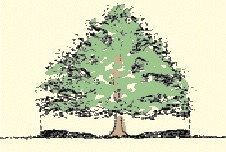
WRONG
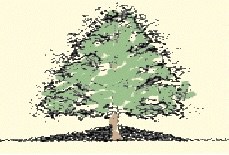
A FEW WORDS ABOUT ROOTS & FOUNDATIONS
Tree roots are often unfairly blamed for foundation cracking during times of drought. People trying to sell root barrier products or foundation repair services will often try to convince home owners that a tree barrier will “protect” their slab. In most cases, this is faulty information, derived from poor knowledge of tree physiology.
Most tree roots exist within the top 18 inches of soil. They do not “pull” water from lower soil levels. In a drought, all soil in an area dries as the water table drops. If a root system is in place, it sometimes cannot allow for even settling. It is this uneven settlement which causes slab cracking – not the tree! Removal of an existing tree can cause even more settlement problems as the old root system decays and leaves voids in the soil.
If a tree exists close to a newly built house, the roots are usually destroyed by the construction of the slab.
New tree roots rarely will grow under a building slab. The soil there is compacted to such a high degree that water and oxygen are not available to the tree.
Roots growing alongside a slab may exert pressure as they grow in size over the years, but these roots are normally easy to locate and remove before becoming a problem.
The best solution? Water your yard regularly. The water will help keep your soils from shrinking, but it will benefit your drought-stressed trees as well.
Cite: https://www.louisianaarborist.org/drought/index.html
A big Pine Tree uprooted and fell onto this house during a normal rain storm recently and caused a lot of damage to the home. We removed it without causing any further damage and ground the stump out. The home owner was very happy to see it gone. Don’t wait until it’s too late! You don’t need a hurricane to pass through to experience damage like this to your home.
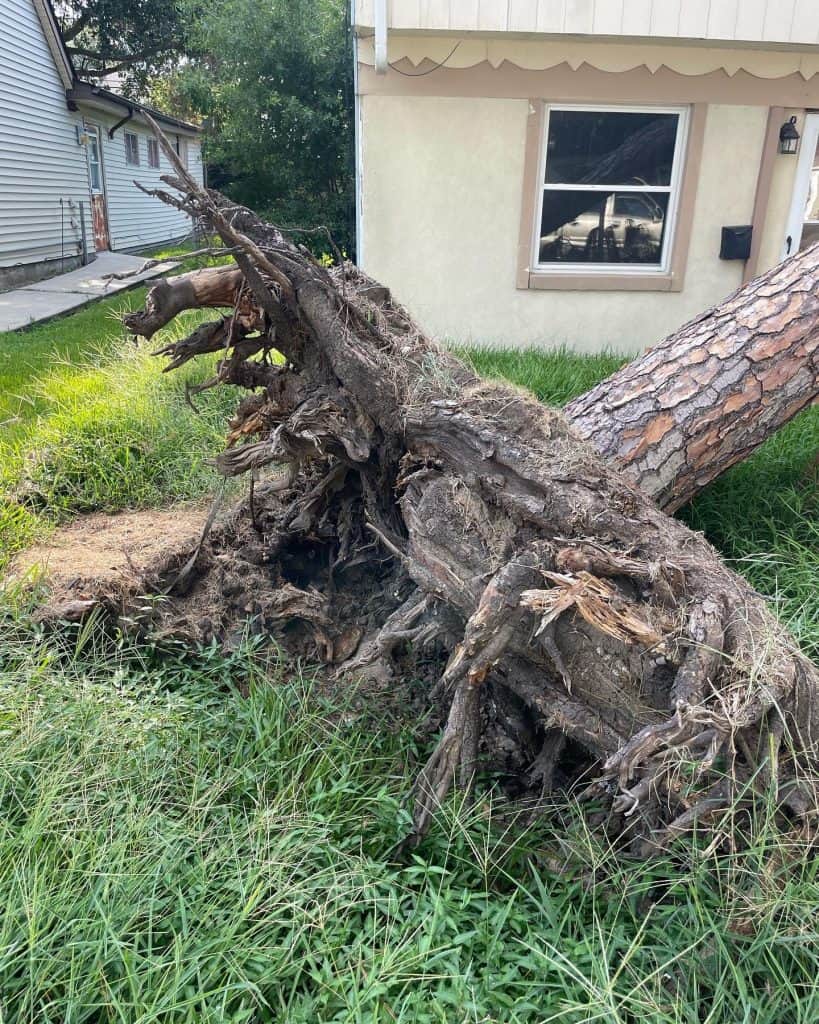
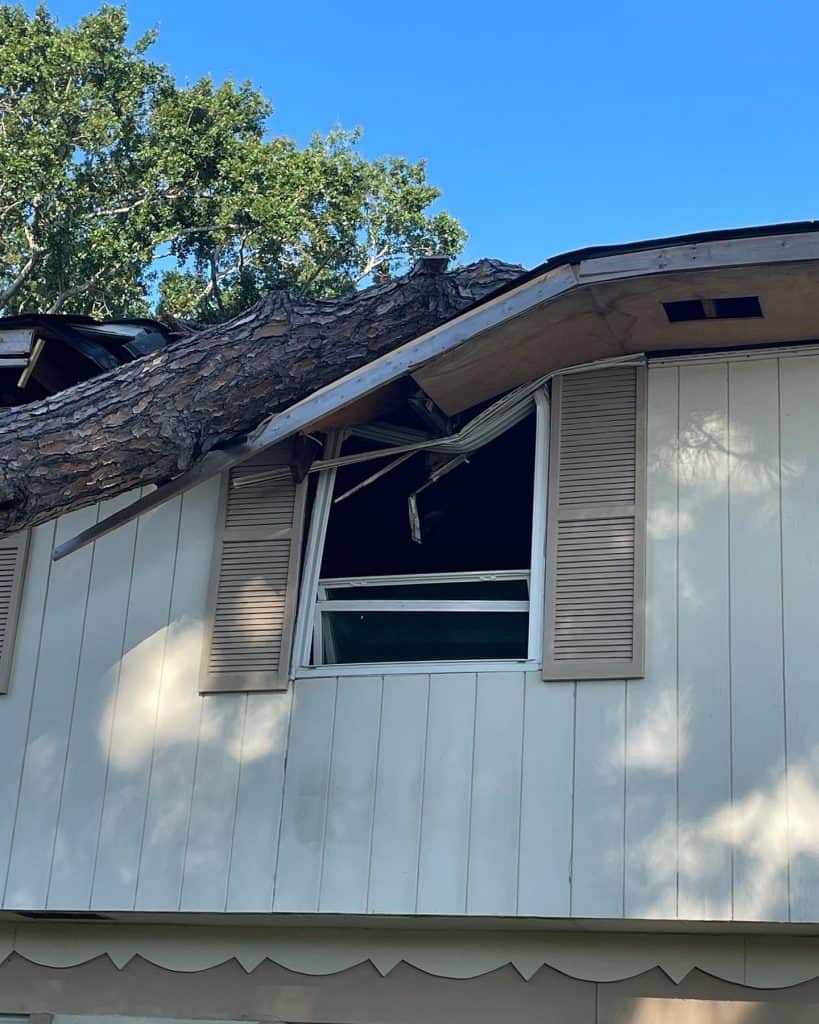
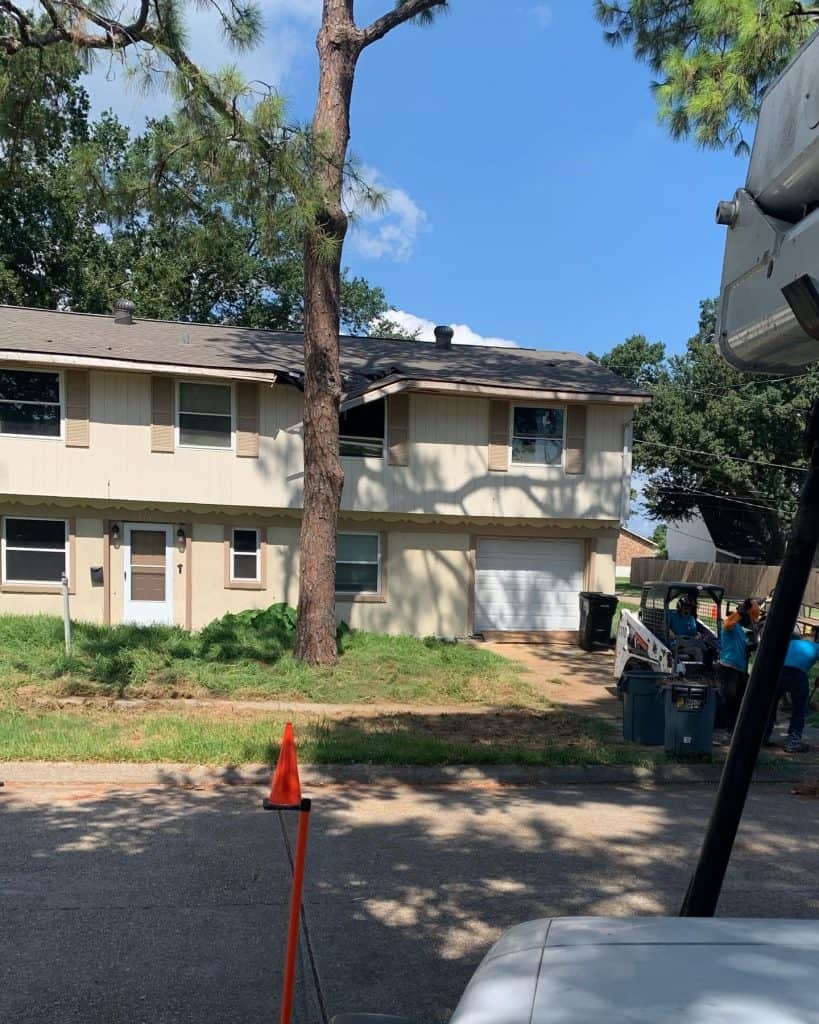
A big limb broke off the trunk of the old Bradford Pear tree and landed on the sidewalk. Thank goodness no one was walking under this tree when the limb broke off ! This is a common problem with Bradford Pear trees. Don’t get caught off guard, get your trees inspected by one of our licensed Arborists before the next storm comes through your area.

